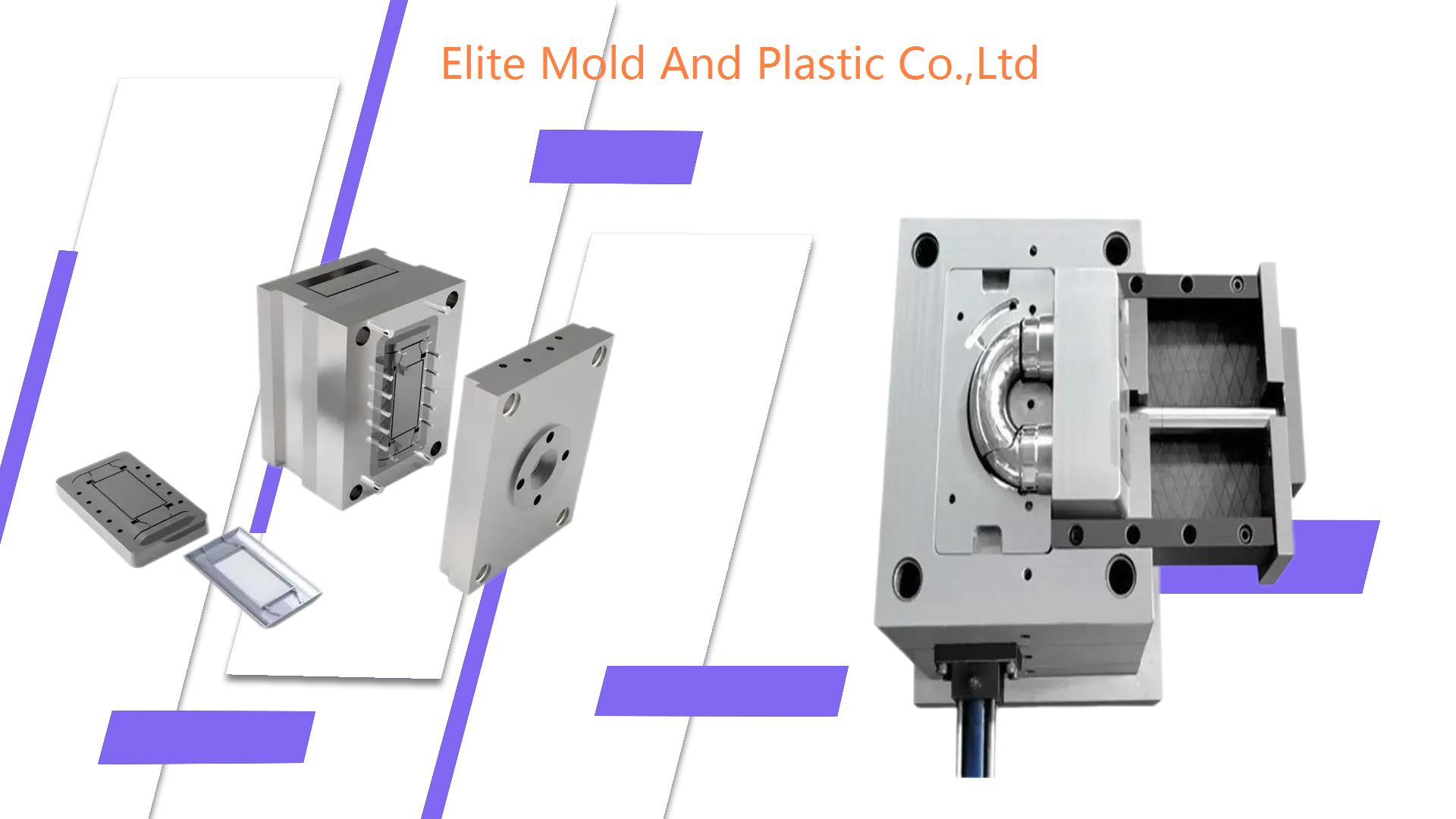Mastering Injection Mold Design: Key Factors for Superior Plastic Part Production
As a leading plastic injection mold manufacturer in China, Elite specializes in producing high-quality plastic injection molds and molded parts at competitive prices. The design of an injection mold is one of the most critical factors in determining the success of plastic part production. A well-designed mold ensures precision, efficiency, and cost-effectiveness, while minimizing defects and maximizing the quality of the finished part. In this article, we will explore the key factors involved in mastering injection mold design and how they contribute to superior plastic part production.
Why Injection Mold Design is Crucial for Plastic Part Production
The design of an injection mold directly influences the manufacturing process and the quality of the molded parts. A poorly designed mold can lead to defects such as warping, sink marks, or short shots, while an optimized mold design can ensure consistency, reduce cycle times, and improve part durability.
Key Goals of Effective Mold Design
- Precision and Accuracy: Ensuring that the mold produces parts with tight tolerances and dimensional accuracy.
- Efficiency: Minimizing cycle times and material waste to enhance productivity and reduce costs.
- Durability: Designing molds that can withstand the pressures of high-volume production without premature wear or failure.
- Quality: Preventing defects and ensuring high-quality surface finishes and structural integrity.
Key Factors in Injection Mold Design
To achieve superior plastic part production, mold designers must consider several critical factors. These include material selection, mold layout, cooling systems, and more. Below are the most important aspects of injection mold design that contribute to high-quality, efficient production.

1. Mold Material Selection
The material used to construct the mold affects both its durability and performance. The mold material must withstand the high pressures and temperatures of the injection molding process without warping or degrading over time.
Common Mold Materials
- Steel: High-strength steel is often used for molds intended for long production runs. It is durable and resistant to wear, making it ideal for high-volume production.
- Aluminum: Aluminum molds are lightweight and less expensive to produce but may not be as durable as steel molds. They are suitable for prototyping and low-volume production runs.
- Hardened Steel: For molds that must endure repeated use, hardened steel provides extra durability and resistance to wear, ensuring longevity.
At Elite, we carefully select the appropriate mold materials based on the specific needs of each project, ensuring that our molds offer both durability and precision.
2. Gate and Runner Design
The gate and runner system controls how the molten plastic flows into the mold cavity. Proper design of this system is essential for ensuring even material distribution, avoiding defects, and optimizing cycle times.
Gate Design
The gate is the point where molten plastic enters the mold cavity. The placement, size, and type of gate used can affect the quality of the molded part.
- Gate Placement: Proper gate placement ensures even filling of the mold, reducing the risk of defects like flow lines or warping.
- Gate Size: A well-sized gate ensures that enough material enters the mold without causing excessive pressure or waste.
- Types of Gates: Different gate types, such as pin gates, edge gates, and submarine gates, are chosen based on part design and material properties.
Runner Design
The runner system distributes the molten plastic from the injection point to various parts of the mold. A balanced runner system ensures that all cavities fill at the same rate, leading to consistent part quality.
- Hot Runner Systems: Hot runners keep the plastic material molten throughout the runner system, reducing waste and improving cycle times.
- Cold Runner Systems: Cold runners allow the material to cool and solidify in the runners, which are then removed and either discarded or recycled.
At Elite, we optimize gate and runner design to ensure efficient material flow, minimize waste, and reduce the risk of defects.
3. Cooling System Design
The cooling phase is one of the most time-consuming stages in the injection molding cycle. An efficient cooling system can dramatically reduce cycle times and improve part quality by ensuring even cooling and preventing warping.
Importance of Cooling Time
- Uniform Cooling: Uneven cooling can lead to warping, shrinkage, or dimensional inaccuracies. By designing cooling channels that evenly distribute heat, the mold helps maintain part integrity.
- Faster Cooling: Optimized cooling systems reduce the overall cooling time, allowing for faster cycle times and higher production rates.
Cooling Channel Design
Properly placed cooling channels remove heat from the mold more efficiently, preventing hot spots and reducing cooling time.
- Conformal Cooling Channels: These channels are designed to follow the contours of the mold cavity, ensuring even cooling across the part.
- Baffle and Bubbler Systems: These systems are used in molds with deep or complex cavities to ensure that even hard-to-reach areas cool effectively.
At Elite, we design cooling systems that ensure fast, even cooling, reducing cycle times and ensuring that parts are produced with minimal distortion.
4. Ejection System
Once the part has cooled and solidified, it must be ejected from the mold. The ejection system must be designed to remove the part without causing damage, such as warping or scratching.
Types of Ejection Systems
- Ejector Pins: These are the most common type of ejection system, where pins push the part out of the mold. The placement and size of the pins are critical to avoiding part damage.
- Air Ejection: In some cases, air pressure is used to gently push the part out of the mold, preventing surface damage.
- Stripper Plates: These plates provide even ejection of parts that may be prone to sticking or deformation.
At Elite, we carefully design the ejection system to ensure smooth part removal while maintaining the structural integrity and surface quality of the molded parts.
5. Mold Shrinkage and Warpage Compensation
Materials shrink as they cool, and the mold design must compensate for this to ensure dimensional accuracy. Warpage occurs when different areas of a part cool unevenly, leading to distortions.
Managing Shrinkage
- Material Shrinkage Rates: Different materials shrink at different rates. Mold designers must account for this when designing the mold cavity size to ensure parts are produced with the correct dimensions.
- Shrinkage Allowances: The mold is often designed slightly larger than the desired part size to account for shrinkage as the part cools and solidifies.
Preventing Warpage
- Even Cooling: Warpage can be minimized by ensuring that the mold cools evenly, reducing internal stresses within the part.
- Part Design Considerations: Adding ribs, gussets, or other structural features can help reinforce parts and reduce the risk of warping.
At Elite, we use advanced mold design software to accurately predict and compensate for shrinkage and warpage, ensuring that parts meet their exact specifications.
6. Material Compatibility with Mold Design
Different materials behave differently during the injection molding process, and the mold design must account for these variations to ensure efficient production and high-quality parts.
Material Flow Characteristics
The flowability of a material affects how easily it can fill the mold cavity, especially for complex or thin-walled parts. Mold designers must choose the right gate size, runner layout, and injection pressure to accommodate the flow properties of the material.
Material Cooling and Shrinkage
Some materials, such as polycarbonate (PC) or nylon, have higher shrinkage rates or require longer cooling times. The mold design must account for these factors to prevent defects like warping or sink marks.
At Elite, we carefully match mold design to the chosen material, ensuring that the material’s properties are fully considered during the design phase.
Conclusion
Mastering injection mold design is essential for achieving superior plastic part production. By focusing on key factors such as material selection, gate and runner design, cooling systems, and shrinkage compensation, manufacturers can produce high-quality parts efficiently and cost-effectively.
At Elite, we are committed to delivering precision-engineered molds that ensure optimal production performance. With our expertise in mold design and production, we help our clients achieve their manufacturing goals by delivering high-quality, competitively priced plastic parts. Contact Elite today to learn more about how we can support your next injection molding project with superior mold design and production services.
Related news
Our Certificates
By co-operating with Elite Mold, you have selected one of the most reliable ISO 9001 certified plastic mold manufacturer, Elite Mold as a plastic injection mold manufacturer specializing in plastic injection mold and supplying plastic injection molding services for plastic mold design, prototype makings, mold flow analysis, precise machining, OEM services, ODM services and so on, building custom plastic injection molding. We are committed to enhance the Process optimized and quality of service, shorten lead time and assist in lowering inventory, by providing new products every year to bring in continuous and higher profits for our clients. The ability to produce mold at the International standard, strong engineering and mold design capability, aggressive delivery, competitive pricing and business integrity continues to be the success factor of Elite Mold.










